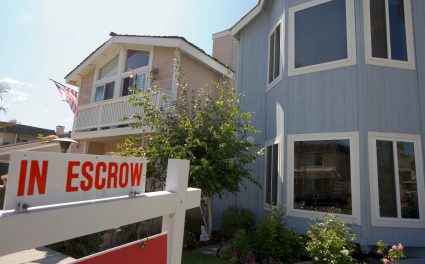Demand for homes is surging in California. This high demand exists despite rapidly rising prices and slowly increasing mortgage interest rates.
Demand, as measured by Trulia, is equal to the percentage of home inventory that is sold each month. As of May 2017, 25% of the home inventory was sold nationwide, equal to the 2005 peak. For comparison, the share of inventory sold bottomed in 2009 at 9%. The share is even greater in California.
High demand and low inventory have combined to create a tight market for homebuyers in 2017.
Sellers are in an equally strained position. While they can likely get top dollar for their current home, many are afraid to list as the lack of inventory makes it a struggle to find a replacement home. This inaction on the part of sellers compounds the low inventory issue for everyone.
The number of homes for sale in mid-2017 was:
- 29% lower than a year earlier in San Jose;
- 25% lower than a year earlier in San Diego;
- 20% lower than a year earlier in Riverside; and
- 12% lower than a year earlier in Los Angeles and Orange County, according to Zillow.
High demand and lower home sales volume
California’s shrinking housing stock is contributing to the state’s stagnant home sales volume.
The number of homes sold year-to-date in 2017 was 308,300 as of August 2017. With the exception of 2014, this is basically the same level California has experienced for the past several years:
The cause of California’s low home sales volume has varied from year to year. The over saturation of speculators was the primary culprit in 2012-2014. Then, quickly rising home prices coupled with slow wage growth created a low sales volume environment in 2015-2016. Now, low inventory is one of the biggest factors slowing down sales.
This is problematic for real estate professionals, who rely on fees generated by sales for a living. True, higher home prices mean higher agent fees. But a slowing to stagnant sales volume means fees are not quick in coming.
Another problem for the real estate industry: new real estate licensees are pouring in. Thus, the number of active real estate agents is growing, and sales are staying flat. This means fewer fees to go around.
Is this the new normal? Or is there a solution?
The solution to grow sales volume lies in more new construction, which will restore the depleted housing stock. What’s more, organic growth will only occur once local governments loosen zoning codes to allow:
- denser housing units;
- looser parking restrictions in urban areas; and
- smoother permitting and environmental review processes.
The good news: this work has recently begun, with California’s state legislature passing several laws aimed at increasing low- and mid-tier housing in 2018.
Related article:















